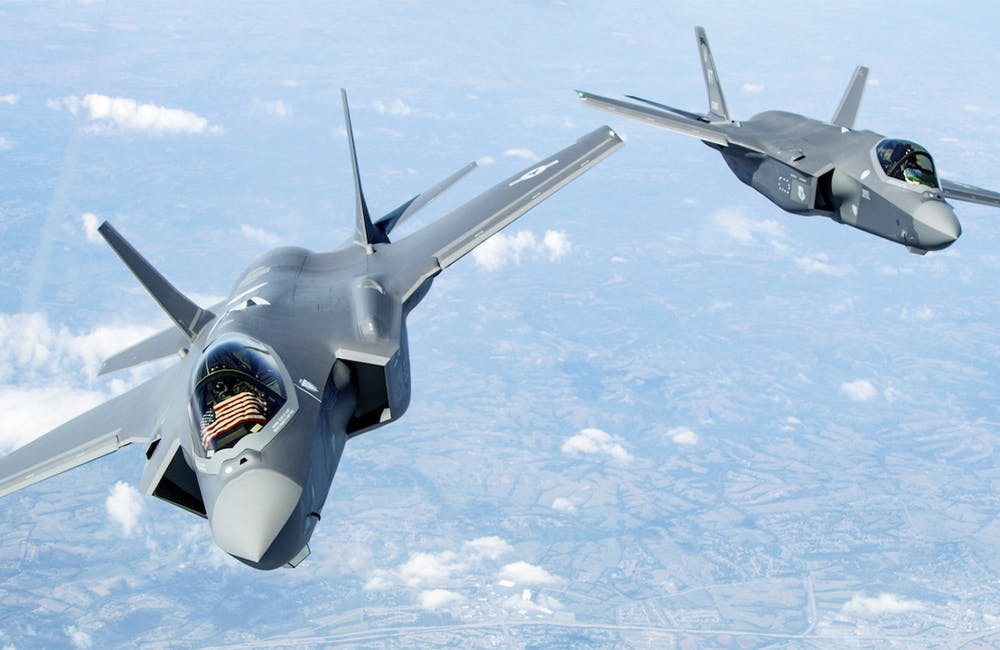The Army of 2030 Will be Transformed for Larger-Scale Operations
The service is shifting its organizational forces to be more software-centric.

With evolving national security challenges and threats presented by China and Russia, the U.S. Army is amidst large-scale modernization over the next decade to change the way it deploys and equips personnel. The Army plans to achieve this by shifting its long-standing brigade-centric model to one focused on divisions leveraging more data analytics.
“What we’ve learned from what’s taking place in current operations in Ukraine … that we can’t halt, we need to be on the move, and then removing complexity,” Maj. Gen. Jeth Rey, director of the Network-Cross Functional Team at the U.S. Army Futures Command, said at an Army network demonstration May 4 in Fort Myer, Virginia. “Because now those [brigade combat teams] are going to be actually in the fight, we have to move complexity up to the division level.”
During the War on Terror, the Army attempted to transform itself into a more agile organization by integrating new digital technology into command posts, thus creating lighter, more sustainable brigade units of action. The shift intended to speed up the Army’s digital transformation but created larger, slow-moving commanding posts.
The Army will now be focusing on the division holistically, according to Maj. Gen. Rey and Maj. Gen. Anthony Potts, program executive officer for Command, Control and Communications (PEO C3T), who are charged with modernizing the Army’s networks. The service will look at technology readiness, policy, doctrine and people in efforts to remove network complexity from the lower echelons.
“As we move to large-scale combat operations, it is going to require us to do a fundamental shift into division as a unit of action,” Rey told reporters May 4.
One of the first moves will be to a secret but unclassified and encrypted environment, instead of having a secret-level environment at the battalion level and below.
Moving to the Integrated Tactical Network (ITN) will provide this secure but unclassified and encrypted environment, Potts said, which will create simplicity, increase mobility and resiliency, and reduce costs.
“If we don’t really need to, if the perishability of the data, the fact that I’m now moving very fast, the fact that … even my command and control is on the move, you really have to start paying attention to, ‘Well, even though there’s data out there, I’m moving so fast that by the time anybody could get through the encryption, it’s really not valid, it’s not useful for them anymore,'” Potts told reporters May 4.
“It’s a problem set, you’d almost want to give them in and bait them into doing … just use your energy and your intellect and your resources to crack open something that by the time you get it cracked open, it has no value to you,” he added.
This is still not a design review, as moving to an unclassified yet encrypted environment might increase the risk of information getting in the hands of adversaries.
“Normally, at this point, we would be saying this is a design review. What we’re saying is this is a discussion because there’s friction points in all of this. If you go [secure but unclassified], it’s a different way we have to think about how we do fires. Technically, we know how to do fires in an SBU,” Potts said. “We have to run those friction points and those threads to see, ‘Are we generating potential operational risk if we say we can do this much simpler and much faster at the battalion and below if we stay SBU?'”
The move to division as a unit of action means the Army will now shift away from capability sets, which were brigade processes introduced in fiscal year 2021. Capability sets intended to provide updated network capabilities to brigades every two years.
Now, the service will shift to a more agile approach to improve software development for the services.
“Prior to this, you would have heard us talking about capability sets, but that’s really a brigade-centric process. So what we’re going to move to is the division is a unit of action network design,” Potts said. “It was a great set … about every two years, we were rolling out new capabilities. It is now about, ‘How do you architect the network for the division as a unit of action?'”
The service is working to produce software-defined systems and deliver capabilities based on the ability to adjust software when needed, he added, which means the Army is working on building out the infrastructure to allow software to be laid over it.
“If you think about software, there’s a middleware layer of services that has security in it — it’s got your data services in it, it’s got your analytics, your [artificial intelligence], your [machine learning],” Potts said. “The whole idea is we are slowly building that out from whether it’s an enterprise services infrastructure to a tactical services infrastructure, but we have to have that laid flat.”
“It’s a hardware that’s got software-defined capability, our ability to move, pull cards out, put cards in, change radio, types, transport types,” Potts added. “It’s the idea, and now we become far more software-defined in our capabilities.”
This is a carousel with manually rotating slides. Use Next and Previous buttons to navigate or jump to a slide with the slide dots
-

Strategies for Effective Data Modernization
Data is the lifeblood of critical decisions and streamlines operations across the government, but many agencies struggle with inconsistent standards.
33m watch -

CDC Updates Public Health Data Strategy
Accelerating data sharing through capabilities like electronic case reporting make up a large portion of the new two-year plan.
3m read -

Joint Navy-Air Force Simulator Expanding Digital Fighter Jet Training
A joint facility with the services wants to replicate its F-35 digital simulator technology across the Defense Department.
5m read -

Sea-Air-Space: Coast Guard Prioritizes Agility in the Face of Technological Change
Adm. Linda Fagan says the modern Coast Guard is to adjusting to the speed of technology.
10m watch








